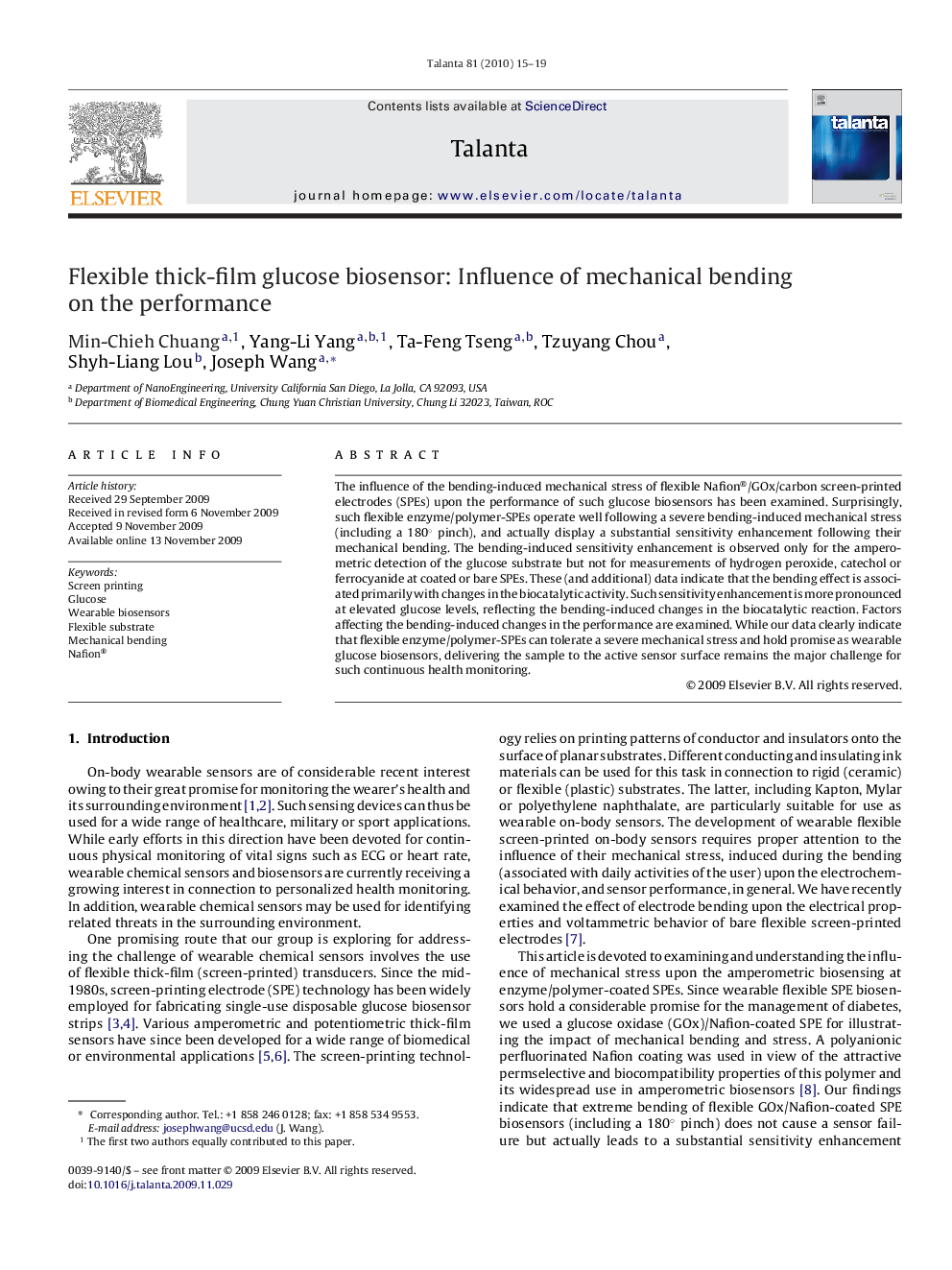| Article ID | Journal | Published Year | Pages | File Type |
|---|---|---|---|---|
| 1246605 | Talanta | 2010 | 5 Pages |
The influence of the bending-induced mechanical stress of flexible Nafion®/GOx/carbon screen-printed electrodes (SPEs) upon the performance of such glucose biosensors has been examined. Surprisingly, such flexible enzyme/polymer-SPEs operate well following a severe bending-induced mechanical stress (including a 180° pinch), and actually display a substantial sensitivity enhancement following their mechanical bending. The bending-induced sensitivity enhancement is observed only for the amperometric detection of the glucose substrate but not for measurements of hydrogen peroxide, catechol or ferrocyanide at coated or bare SPEs. These (and additional) data indicate that the bending effect is associated primarily with changes in the biocatalytic activity. Such sensitivity enhancement is more pronounced at elevated glucose levels, reflecting the bending-induced changes in the biocatalytic reaction. Factors affecting the bending-induced changes in the performance are examined. While our data clearly indicate that flexible enzyme/polymer-SPEs can tolerate a severe mechanical stress and hold promise as wearable glucose biosensors, delivering the sample to the active sensor surface remains the major challenge for such continuous health monitoring.
